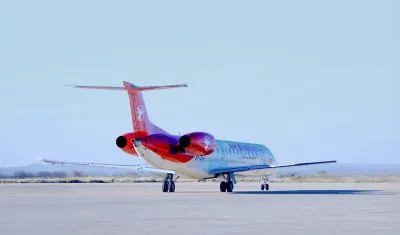2011 was a challenging year for mining companies. We take a look at what the key players and companies have been up to and have planned.
Perhaps the biggest story of the year was the bid by Anglo American for a further 40% stake in De Beers, the diamond giant, for $5.1bn. The sale of the Oppenheimer family stake, Africa’s second-richest family after the Dangotes, would give control of De Beers to Anglo, who already own a 45% stake. The deal was announced in November and was overwhelmingly approved by Anglo’s shareholders on 6th January.
The Oppenheimers have been involved with De Beers for 80 years but Anglo have been under pressure from shareholders to either divest their stake or take full control.
Botswana has a 15% stake in De Beers and a pro-rata pre-emption right to increase that stake to 25%, if it so wishes. Given that De Beers is the world’s dominant diamond producer and given that the purchase price is under six times earnings, lower than many of its peers, it will be interesting to see if the government elects to exercise this option.
In Nigeria, Aliko Dangote’s eponymous cement company, which contributes 80% of the Dangote Group’s revenues, is set to become the sixth-biggest producer in the world, if it achieves it expansion goals. The company produced 8mt in 2010, an estimated 12mt in 2011 and is looking to increase that capacity to 20mt over the next two years. Dangote Cement, by far the biggest company quoted on the Nigerian stock exchange, operates in Benin, Ghana and Nigeria. Expansion plans for the medium term involve opening up operations in Angola, Cameroon, Senegal and South Africa with the intention of raising capacity to 46mt by 2015.
The company’s low debt, high levels of per plant output, improving margins and aggressive expansion plans mean it is increasingly able to push aside foreign multinational firms. Its rivals include France’s Lafarge, the second-largest producer in Nigeria, which has a firm foothold on the continent, having purchased Egypt’s Orascom Cement in 2007.
Another of Africa’s mining billionaires, Patrice Motsepe, founder of African Rainbow Minerals, has had a good year. Earnings at the firm for the first half, announced in August, rose 94% with dividends up 125%. The company has kept costs reined in. Iron ore output in South Africa is expanding and the Konkola North Copper Project in Zambia looks set to start producing before the end of next year.
The Chinese interest
As ever Chinese firms have been active on the continent. In July, China’s Jinchuan Group announced a $1.1bn bid for South Africa’s Metorex, which was eventually accepted in preference to an earlier lower bid by Vale, and in November, regulators in Zambia (the company has copper and cobalt mines in Zambia and the DRC) and in China, confirmed their approval of the deal. Shares in the former JSE company were delisted on in January. Jinchuan is expected to make further acquisitions on the continent whilst Vale has already announced a five-year investment programme in the region of $15-20bn.
Minmetals, despite missing out on Equinox, with its precious Lumwana mine, to Vale, is still pursuing Anvil Mining, a copper miner in the DRC. The deal has the approval of the Australian authorities but not yet from Gécamines, the DRC state miner. The $1.3bn offer expires mid-February having been launched in the spring.
Another Chinese company looking to expand is Sichuan Hanlong, who have bid $1.3bn for Sundance Resources, owner of the Mbalam iron ore project, which crosses the Cameroon border with Congo. Sichuan already has a 15% stake and in July offered shareholders a generous premium in the region of 40% above the price it was trading at when the bid was made in November. The project will require huge investment; it needs a 510km railway and deep-water port to be constructed before production of an estimated 35mt a year can commence in 2014. However, Sundance shares soon fell below the bid price (at the time of going to press) and remain currently around 20% below, due to uncertainties that the deal will proceed and whether the bidder has the funds to facilitate the transaction.
Glencore goes shopping
On the copper-cobalt trail, the recently floated Glencore is rumoured to be about to bid a figure in the region of $400m for the 26% of Katanga Mining it does not own. The company is headed by South Africa’s richest man, Ivan Glasenberg, who is worth an estimated $10bn.
The company is on the acquisition trail, having recently purchased 80% of Namibia’s Rosh Pinah zinc mine, principally from Exxaro, which is South Africa’s largest black-empowered miner and its second-largest coal miner, formerly part of Kumba Resources. Production is anticipated to be 95,000t a year over about eight years. Glencore controls 60% of the global trade in marketable zinc.
There was good news for Exxaro workers too. Following the example of its former group partner, Kumba Iron Ore, which, in addition to its employee share-ownership programme, paid out some $332m to its employees, Exxaro paid each its 10,000 employees around R135,000 ($1,616) each as part of its employee empowerment scheme.
Nearby to the Rosh Pinah mine in Namibia is the Skorpion zinc mine, the eighth-largest in the world. It was purchased by India’s Vedanta in December 2010 for $707m from Anglo American. The mine produces some of the world’s purest zinc and Vedanta’s reported interest in buying Rosh Pinah suggests a belief that this mine too has similar potential.
In December last year, Glencore purchased 46% of Umbeco Mining, a South African coal miner. The company’s biggest investment has been in Optimum Coal Holdings (OCH), South Africa’s fourth-largest coal exporter. By September it had acquired 24% of OCH and in November purchased Mercuria’s 15% stake. A formal offer for the rest of the company is expected to follow shortly.
However, also in December, Glencore disposed of a stake in Shanduka Coal to the Shanduka Group, an unlisted black-owned and managed investment firm led by Cyril Ramaphosa, former ANC secretary-general. Shanduka paid $45.5m and used its 30% stake in Kangra Coal to fund the deal as well as planned capital expenditure of $24.6m over the next five years.
The purchase raises Shanduka Group’s holding in the coal company from 30% to 50.01%. The joint venture with Glencore produces around 7mt of coal a year which is sold to Eskom for power production. Ramaphosa is also partnering Glencore in its takeover of OCH; the two partners have a current combined holding of around 65% of the company. December also saw the China Investment Corporation take a 25% stake in the Shanduka Group for 246m.
The start of January this year saw ENRC settle with First Quantum over the latter’s claims regarding the Kolwezi copper mine in the DRC for $1.25bn. Glencore had been rumoured to be about to launch a $12bn bid for the London-listed, predominantly Kazakh-owned miner which, in addition to Kolwezi, owns platinum, coal, bauxite and other copper assets across the continent.
Glencore is still 75% owned by staff and management but this is expected to fall to 50% by May this year. This will provide further funds for acquisitions and further increase the already-longstanding expectations of a bid for Xstrata, in which it already holds a 35% stake. Xstrata mines coal, nickel and zinc across Africa.
The hot sectors for deals are likely to be coal and iron ore. In the previous year, African Minerals reached a deal with Shangdong Iron & Steel Group, which invested $1.5bn in the company’s Tonkili project in Sierra Leone to provide for necessary infrastructure and other commissioning costs in exchange for a 25% stake and access to its uptake at a discount.
Similarly, China International Fund reached a $2.7bn deal with Bellzone Mining, which own the Kalia deposit in Guinea. This will also involves paying for infrastructure in return for 90% CIF ownership and the right to buy uptake at the market price.
Many of the world’s largest miners, BHP Billiton, Rio Tinto, Freeport McMoRan, Xstrata and Anglo American were cautious as far as deal making went in 2011, but they certainly will be looking for value in the year ahead.
Want to continue reading? Subscribe today.
You've read all your free articles for this month! Subscribe now to enjoy full access to our content.
Digital Monthly
£8.00 / month
Receive full unlimited access to our articles, opinions, podcasts and more.
Digital Yearly
£70.00 / year
Our best value offer - save £26 and gain access to all of our digital content for an entire year!

 Sign in with Google
Sign in with Google 


